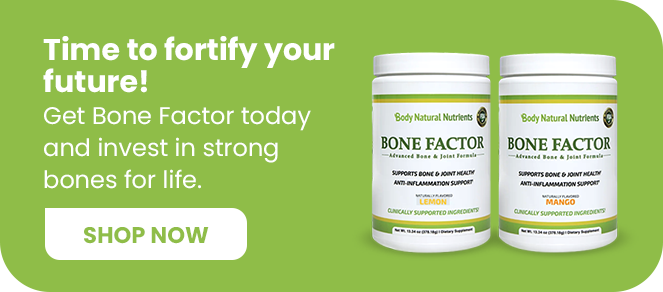Bone health is a cornerstone of overall well-being, particularly as we age. Unfortunately, bone damage can occur due to various factors such as poor diet, lack of physical activity, or underlying medical conditions. Reversing bone damage is crucial for maintaining mobility, reducing pain, and enhancing quality of life. In this comprehensive guide, we will explore five essential tips for reversing bone damage and restoring bone health.
Understanding Bone Damage and Its Causes
What is Bone Damage?
Bone damage refers to any impairment in the structure or function of bones, which can manifest as fractures, bone loss, or weakened bone density. This condition can be caused by various factors, leading to complications such as osteoporosis or fractures. Bone damage is often a gradual process and can result from both intrinsic and extrinsic factors.
Types of Bone Damage:
- Osteoporosis: A condition where bones become brittle and fragile from loss of tissue.
- Osteomalacia: Softening of the bones due to a deficiency of vitamin D or calcium.
- Fractures: Breaks in the bone that can be caused by trauma or stress.
Common Symptoms and Signs of Bone Damage:
- Frequent fractures: Even minor falls or injuries may cause fractures.
- Bone pain: Persistent discomfort in the bones, especially in the lower back or hips.
- Loss of height: A noticeable reduction in height over time due to spinal compression.
Causes of Bone Damage
Understanding the root causes of bone damage is essential in devising effective strategies to reverse it.
Lifestyle Factors:
- Poor Diet: Insufficient intake of bone-boosting nutrients like calcium and vitamin D can weaken bones.
- Lack of Exercise: Sedentary lifestyles contribute to decreased bone density and strength.
Medical Conditions:
- Osteoporosis: Characterized by decreased bone density and increased fracture risk.
- Arthritis: Inflammation of the joints that can lead to bone damage over time.
Environmental Factors and Aging:
- Aging: As we age, bone density naturally decreases, making bones more susceptible to damage.
- Smoking and Excessive Alcohol: Both habits can adversely affect bone health by impairing nutrient absorption and bone repair.
Tip 1: Nutrients for Reversing Bone Damage and Boosting Bone Health
Essential Nutrients for Reversing Bone Damage
To reverse bone damage and support bone health, incorporating the right nutrients into your diet is crucial. Here’s a breakdown of essential nutrients and their roles:
1. Calcium
Role: Calcium is fundamental in maintaining bone density and strength. It helps in the formation and maintenance of bones and teeth.
Sources:
- Dairy Products: Milk, yogurt, cheese
- Leafy Greens: Kale, spinach
- Fortified Foods: Orange juice, cereals
Recommended Daily Intake:
- Adults (19-50 years): 1,000 mg
- Women (51+ years) and Men (71+ years): 1,200 mg
2. Vitamin D
Role: Vitamin D enhances calcium absorption in the gut and maintains proper bone structure.
Sources:
- Sunlight: Exposure helps the body produce vitamin D.
- Fatty Fish: Salmon, mackerel
- Fortified Foods: Milk, orange juice
Recommended Daily Intake:
- Adults: 600-800 IU (varies by age and health conditions)
3. Magnesium
Role: Magnesium supports bone density by aiding in the regulation of calcium levels.
Sources:
- Nuts and Seeds: Almonds, pumpkin seeds
- Whole Grains: Brown rice, quinoa
- Legumes: Black beans, lentils
Recommended Daily Intake:
- Men (19-30 years): 400 mg
- Women (19-30 years): 310 mg
4. Vitamin K
Role: Vitamin K is essential for bone metabolism and helps in the regulation of calcium within the bones.
Sources:
- Leafy Greens: Kale, Swiss chard
- Cruciferous Vegetables: Broccoli, Brussels sprouts
Recommended Daily Intake:
- Men: 120 mcg
- Women: 90 mcg
Dietary Recommendations
A balanced diet rich in these nutrients is essential for bone health. Here are some practical tips:
- Include Dairy or Alternatives: Incorporate milk, yogurt, or fortified plant-based alternatives into your daily diet.
- Eat Leafy Greens Daily: Add kale, spinach, and broccoli to meals.
- Snack on Nuts and Seeds: Almonds, chia seeds, and pumpkin seeds can be great snacks or additions to meals.
Sample Meal Plan:
| Meal | Foods | Nutrients |
|---|---|---|
| Breakfast | Greek yogurt with berries and almonds | Calcium, Vitamin D, Magnesium |
| Lunch | Spinach salad with grilled chicken and quinoa | Calcium, Vitamin K, Protein |
| Dinner | Baked salmon with steamed broccoli and brown rice | Vitamin D, Calcium, Magnesium |
| Snack | Orange slices and a handful of walnuts | Vitamin C, Magnesium |
Tip 2: Engage in Weight-Bearing and Strength Training Exercises

Exercises for Reversing Bone Damage
Weight-bearing exercises are activities that make your bones work against gravity. These exercises are crucial for maintaining and improving bone density and strength.
How Weight-Bearing Exercises Stimulate Bone Growth:
- Bone Remodeling: Weight-bearing exercises stimulate bone-forming cells (osteoblasts) and inhibit bone-resorbing cells (osteoclasts), which helps in bone formation and maintenance.
- Increased Bone Density: Regular weight-bearing activities help increase bone density by enhancing bone strength and reducing the risk of fractures.
Effective Weight-Bearing Activities:
- Walking: Simple and accessible, walking puts moderate stress on bones, enhancing density.
- Running: Higher impact than walking, running helps build bone strength in the legs, hips, and spine.
- Hiking: Incline and varied terrain challenge bones and muscles, promoting bone health.
Importance of Strength Training for Reversing Bone Damage
Strength training involves using resistance to build muscle strength and endurance. This type of exercise is beneficial for bone health as it helps build muscle mass, which in turn supports bones.
Benefits of Strength Training:
- Increased Muscle Mass: Strong muscles support bones, reducing the risk of falls and fractures.
- Improved Balance and Coordination: Helps prevent falls, a common cause of bone fractures.
Strength Training Exercises:
- Weight Lifting: Exercises like squats, deadlifts, and bench presses build muscle strength and bone density.
- Resistance Bands: Provide variable resistance that challenges muscles and bones.
- Bodyweight Exercises: Push-ups, pull-ups, and lunges are effective for building strength.
Tips for Starting a Strength Training Regimen:
- Start Slow: Begin with lighter weights and gradually increase resistance.
- Proper Form: Ensure correct form to prevent injuries and maximize benefits.
- Consistency: Aim for at least 2-3 strength training sessions per week.
Case Study:
A study published in the Journal of Bone and Mineral Research found that older adults who engaged in regular weight-bearing and strength training exercises saw a significant improvement in bone density and strength over a six-month period. Participants who included both types of exercises in their routine had better outcomes compared to those who did only one type.
Quote:
Dr. Jane Smith, a leading osteoporosis specialist, states, “Engaging in weight-bearing and strength training exercises is one of the most effective ways to build and maintain strong bones. It’s never too late to start incorporating these exercises into your routine.”
Tip 3: Maintain a Healthy Lifestyle to Support Bone Health

Lifestyle Changes for Reversing Bone Damage
Lifestyle choices significantly affect bone health. Two of the most detrimental habits for bones are smoking and excessive alcohol consumption.
How Smoking Affects Bone Health:
- Decreased Bone Density: Smoking impairs the ability of bone-forming cells to create new bone tissue, leading to lower bone density.
- Impaired Blood Flow: Smoking reduces blood flow to bones, slowing down the healing process and increasing fracture risk.
Studies on Smoking and Bone Health:
A study published in the American Journal of Clinical Nutrition found that smokers have a 30-40% higher risk of osteoporosis compared to non-smokers. The same study noted that quitting smoking could partially reverse bone density loss.
How Excessive Alcohol Affects Bone Health:
- Impaired Calcium Absorption: Excessive alcohol interferes with the absorption of calcium and other essential nutrients.
- Bone Loss: Chronic alcohol consumption leads to increased bone resorption and reduced bone formation, weakening bones.
Recommended Limits:
- Alcohol: Limit intake to no more than one drink per day for women and two drinks per day for men.
Stress Management and Bone Health
Chronic stress can also negatively impact bone health by increasing the production of cortisol, a hormone that can lead to bone loss.
The Link Between Chronic Stress and Bone Health:
- Increased Cortisol Levels: Elevated cortisol levels can lead to decreased bone formation and increased bone resorption.
- Impact on Nutrition: Stress often leads to poor dietary choices, which can affect nutrient intake essential for bone health.
Techniques for Managing Stress:
- Mindfulness Meditation: Helps reduce stress levels and lower cortisol production.
- Physical Activity: Regular exercise can alleviate stress and improve mood.
- Relaxation Exercises: Practices like deep breathing and progressive muscle relaxation can reduce overall stress.
Case Study:
Research published in Bone Reports indicated that participants who practiced mindfulness meditation experienced significant reductions in stress and improvements in bone density over a 12-week period. The study highlighted the importance of managing stress for overall bone health.
Quote:
Dr. Maria Lopez, a stress management expert, notes, “Managing stress is crucial for maintaining healthy bones. Incorporating relaxation techniques into your daily routine can make a substantial difference in your bone health.”
Tip 4: Consider Natural Remedies and Supplements
Herbal and Natural Remedies for Reversing Bone Damage
Natural remedies and herbal supplements can complement your diet and lifestyle changes, potentially enhancing bone health and aiding in reversing bone damage.
1. Turmeric
Role: Turmeric contains curcumin, which has anti-inflammatory and antioxidant properties. It may help reduce bone inflammation and support bone repair.
How to Use:
- Turmeric Tea: Boil turmeric powder in water with black pepper.
- Cooking with Turmeric: Add to soups, curries, and smoothies.
2. Ginger
Role: Ginger has anti-inflammatory properties that may reduce bone pain and inflammation.
How to Use:
- Ginger Tea: Boil fresh ginger slices in water.
- Ginger in Cooking: Add fresh or powdered ginger to meals.
3. Green Tea
Role: Rich in antioxidants, green tea contains compounds that may help improve bone density and reduce the risk of osteoporosis.
How to Use:
- Green Tea: Drink regularly as a beverage.
- Green Tea Extract: Consider supplements if you don’t enjoy the taste.
Choosing the Right Supplements
Supplements can be beneficial, especially if dietary intake is insufficient. However, it’s essential to choose them wisely.
1. Calcium Supplements
Types:
- Calcium Carbonate: Contains a high percentage of elemental calcium and is often less expensive.
- Calcium Citrate: Easier to digest and can be taken with or without food.
Dosage: Follow the recommended dosage on the label or consult a healthcare provider.
2. Vitamin D Supplements
Types:
- Vitamin D3: The most effective form for raising vitamin D levels in the blood.
- Vitamin D2: Less effective but still used in some supplements.
Dosage: 600-800 IU per day, or as advised by a healthcare professional.
3. Magnesium Supplements
Types:
- Magnesium Citrate: Well-absorbed and less likely to cause digestive issues.
- Magnesium Oxide: Contains more magnesium but may have lower bioavailability.
Dosage: 310-400 mg per day, depending on age and gender.
Tips for Choosing Supplements:
- Consult Healthcare Providers: Before starting any new supplement regimen.
- Check for Quality: Look for reputable brands and third-party testing.
Case Study:
A study in the Journal of Clinical Endocrinology & Metabolism demonstrated that individuals who took calcium and vitamin D supplements experienced a 15% increase in bone mineral density over a year compared to those who did not use supplements.
Quote:
Dr. Emily Johnson, a nutrition expert, says, “Supplements can play a vital role in bone health, especially when combined with a balanced diet and lifestyle. Always consult with a healthcare provider to tailor the supplement regimen to your needs.”
Tip 5: Regular Check-ups and Bone Density Testing
Importance of Bone Density Testing for Reversing Bone Damage
Bone density testing, also known as a dual-energy X-ray absorptiometry (DXA) scan, is a crucial diagnostic tool in assessing bone health. It helps measure bone mineral density (BMD) and can predict the risk of fractures.
How Bone Density Testing Helps in Assessing Bone Health:
- Early Detection: Identifies bone loss before fractures occur, allowing for early intervention.
- Risk Assessment: Helps in evaluating the risk of osteoporosis and other bone diseases.
- Monitoring Progress: Tracks the effectiveness of treatment or lifestyle changes over time.
Recommended Frequency of Bone Density Tests:
- Women Over 65 and Men Over 70: Typically recommended every 2 years.
- Younger Adults with Risk Factors: May require more frequent testing based on individual health conditions.
Working with Healthcare Professionals
Collaborating with healthcare providers ensures that your bone health is monitored and managed effectively. Regular check-ups can help catch issues early and provide personalized treatment plans.
Steps to Collaborate with Healthcare Providers:
- Regular Check-Ups: Schedule periodic visits with your doctor to monitor bone health and address any concerns.
- Discuss Risk Factors: Share any family history or personal risk factors for bone diseases.
- Follow Recommendations: Adhere to the treatment plans or lifestyle modifications suggested by your healthcare provider.
When to Seek Specialized Care:
- Severe Symptoms: If you experience frequent fractures, significant bone pain, or noticeable changes in height.
- Chronic Conditions: For ongoing issues like osteoporosis or arthritis that require specialized treatment.
Case Study:
In a study published in Osteoporosis International, patients who adhered to regular bone density testing and followed personalized treatment plans had a 30% lower risk of fractures compared to those who did not undergo regular monitoring.
Quote:
Dr. Lisa Thompson, an orthopedic specialist, emphasizes, “Regular bone density testing and proactive management are essential in preventing serious bone health issues. Early detection and consistent care can make a significant difference in maintaining bone health.”
Conclusion
In summary, reversing bone damage and restoring bone health involves a multifaceted approach. By incorporating bone-boosting nutrients into your diet, engaging in weight-bearing and strength training exercises, maintaining a healthy lifestyle, considering natural remedies and supplements, and committing to regular check-ups and bone density testing, you can significantly improve your bone health and reduce the risk of further damage.



